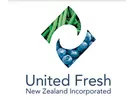 There is no question that the world has changed immensely in the space of just 12 months. The unprecedented scale of the COVID-19 pandemic has touched the lives of every New Zealander and the implications of the national lockdown will be felt for years to come.
There is no question that the world has changed immensely in the space of just 12 months. The unprecedented scale of the COVID-19 pandemic has touched the lives of every New Zealander and the implications of the national lockdown will be felt for years to come.
In the nation’s grocery aisles, there has been a significant shift in consumer behaviour which has shaped our pick of the top trends to watch for in 2021.
The ultimate health kick
Unsurprisingly, health and well-being top the list of concerns for shoppers across the country. Foods that boost immunity and those that are viewed as nourishing the body and the mind are expected to be the most sought-after as we re-prioritise health as our number one goal.
Over 20 percent of shoppers are actively seeking out immunity-boosting food and beverage options; fresh fruit and vegetables, with their natural ‘health halo’, are top of the list. New additives such as collagen and whey protein are likely to appear more frequently as well.
Food hygiene is also an emerging trend as shoppers express concern about the safety of the items in their trolley. Ironically, the popularity of plastic wrapped produce has increased in the search for hygienically disinfected ‘low touch’ groceries despite the environmental concerns.
The big shop is back
For several years now the trend towards shopping more often for smaller amounts has been number one on the list of consumer behaviour changes. COVID-19 has stopped that in its tracks with nearly 20 percent of Kiwis choosing to return to the ‘big shop’. No more regular top-ups, no shopping across multiple stores, we’ve continued with the lockdown rules of visiting the supermarket only when we need to. In fact, research by Foodstuffs shows Kiwis are making around 50 percent fewer visits to stores each week despite our lack of community transmission.
Online and ongoing
In 2019, less than 10 percent of Kiwis shopped for groceries online. Thanks to COVID-19 and a nationwide lockdown, those numbers have surged to nearly 30 percent. Shoppers that had never tried an online weekly shop have become converts and such a rapid increase has led to significant changes for the grocery trade.
Based on overseas examples, those numbers are set to increase even more with online grocery shopping up 25 percent in the US and 40 percent in Asia. The online trend is likely to see a reduction in the number of stores, perhaps as many as half closing and many being repurposed into ‘dark stores’, operating as a warehouse for either click and collect grocery shoppers or home delivery services.
Online shopping trends have also enabled wholesalers to enter the retail landscape offering ‘farm to door’ delivery services. Ordering a box of apples direct from the orchard enables shoppers to connect directly with the grower.
The brand connection
Consumers in 2021 will be increasingly critical of the brands that they support. Long term loyalty is increasingly important in the marketplace as is the perception of a brand’s performance during the pandemic.
In the supermarket aisle, home brands are growing rapidly - as much as three times faster than other brands in some categories. Building trust will be just as essential for traditional brands as it will for new brands entering the market.
Post lockdown, most retailers have moved away from paper-based marketing with new digital technology offerings such as digital mailers tied to store cards. This advancement provides a tailored approach enabling retailers to target individual consumers based on their buying behaviour and saves an extraordinary 60 tonnes of paper each week.
For the full trend report, please click here.
